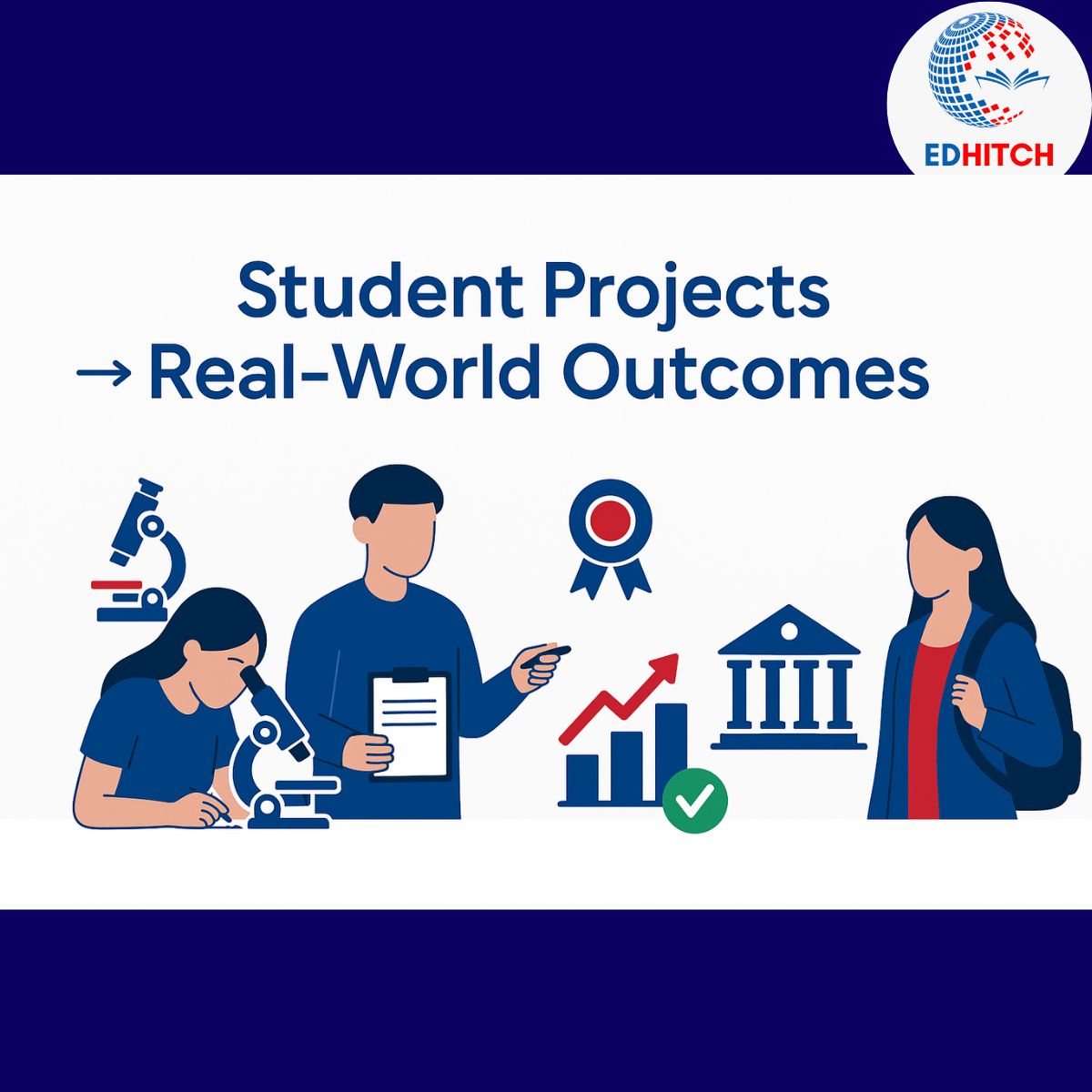In many institutions, student projects are treated as academic formalities—submitted for grades and forgotten soon after. But when designed strategically, these projects can transform into real-world solutions that shape careers, build institutional credibility, and attract both recruiters and students.
With NAAC, NBA, and NIRF increasingly emphasizing research outcomes, innovation, and employability, it’s time for institutions to rethink projects—not as paperwork, but as pathways to placements, brand value, and admissions growth.
1. From Classroom Assignments to Industry-Ready Solutions
- Traditional projects often lack real-world relevance.
- By aligning them with industry challenges, community problems, and research gaps, students gain exposure to authentic problem-solving.
- Institutions can partner with local businesses, startups, and NGOs to source problem statements that matter.
Impact: Students graduate with portfolios that recruiters value, showing applied skills rather than just theoretical knowledge.
2. Elevating Placements through Project-Based Learning
- Recruiters prefer skills over grades. A student who can demonstrate a live project, patent, or industry collaboration becomes more attractive.
- Capstone projects linked to emerging technologies (AI, sustainability, healthcare, digital transformation) prepare students for tomorrow’s jobs.
- Institutions can set up innovation showcases or “demo days” to connect students with recruiters.
NAAC/NBA/NIRF Connection:
3. Building Brand Value through Research Culture
- Institutions known for student-driven innovation attract media attention, industry partnerships, and higher rankings.
- A structured research culture—mentorship, funding, incubation—signals quality to accrediting bodies and prospective students.
- Faculty mentoring student projects into patents, prototypes, or startups strengthens institutional reputation.
Impact: Brand visibility grows organically, positioning the institution as a hub of innovation rather than just a teaching center.
4. Driving Admissions with Outcome Stories
- Parents and students seek institutions that promise careers, not just degrees.
- When student project outcomes are showcased in brochures, websites, and NIRF submissions, they act as proof of excellence.
- Success stories—students securing jobs, launching startups, or publishing research—become powerful admissions marketing tools.
Example: “Our final-year students developed a water-purification system that is now deployed in rural villages—earning them both placements and recognition.”
5. Steps to Create a Real-World Project Culture
- Industry Collaboration: Create a database of problem statements sourced from corporates and government bodies.
- Interdisciplinary Teams: Encourage collaboration between engineering, management, and social sciences students.
- Faculty Mentorship: Train faculty to guide projects beyond theory—towards consultancy, IP, and grants.
- Evidence Tracking: Maintain a project-to-outcome dashboard aligned with NAAC, NBA, and NIRF parameters.
- Recognition: Celebrate project outcomes with awards, media coverage, and industry showcases.
6. The Payoff: Placements, Brand, and Admissions
When students see their projects creating tangible impact, they become motivated learners and confident professionals. Recruiters see them as industry-ready hires. Parents see the institution as a trusted brand worth investing in. And accrediting bodies see evidence of a sustainable innovation ecosystem.
In short, projects done right = placements, brand value, and admissions growth.
📖 Frequently Asked Questions (FAQ)
How do student projects improve placements?
Projects showcase applied skills to recruiters. When linked to industry challenges, they demonstrate employability beyond classroom learning.
How can student projects build institutional brand value?
Patents, prototypes, and consultancy outcomes from projects attract media attention, industry partnerships, and accreditation recognition—enhancing brand reputation.
What is the role of student projects in NAAC, NBA, and NIRF?
NAAC: Demonstrates innovation ecosystem and employability initiatives.
NBA: Maps projects to PO/PSO attainment, proving outcome-based learning.
NIRF: Adds value to perception, graduation outcomes, and research practices.
How can student project outcomes attract more admissions?
Success stories—like students launching startups or solving community problems—become powerful admission marketing tools, showcasing real career pathways.
How can institutions create a culture of real-world projects?
By collaborating with industry for problem statements, mentoring students, supporting interdisciplinary teams, and tracking outcomes via dashboards aligned to NAAC/NBA/NIRF.

